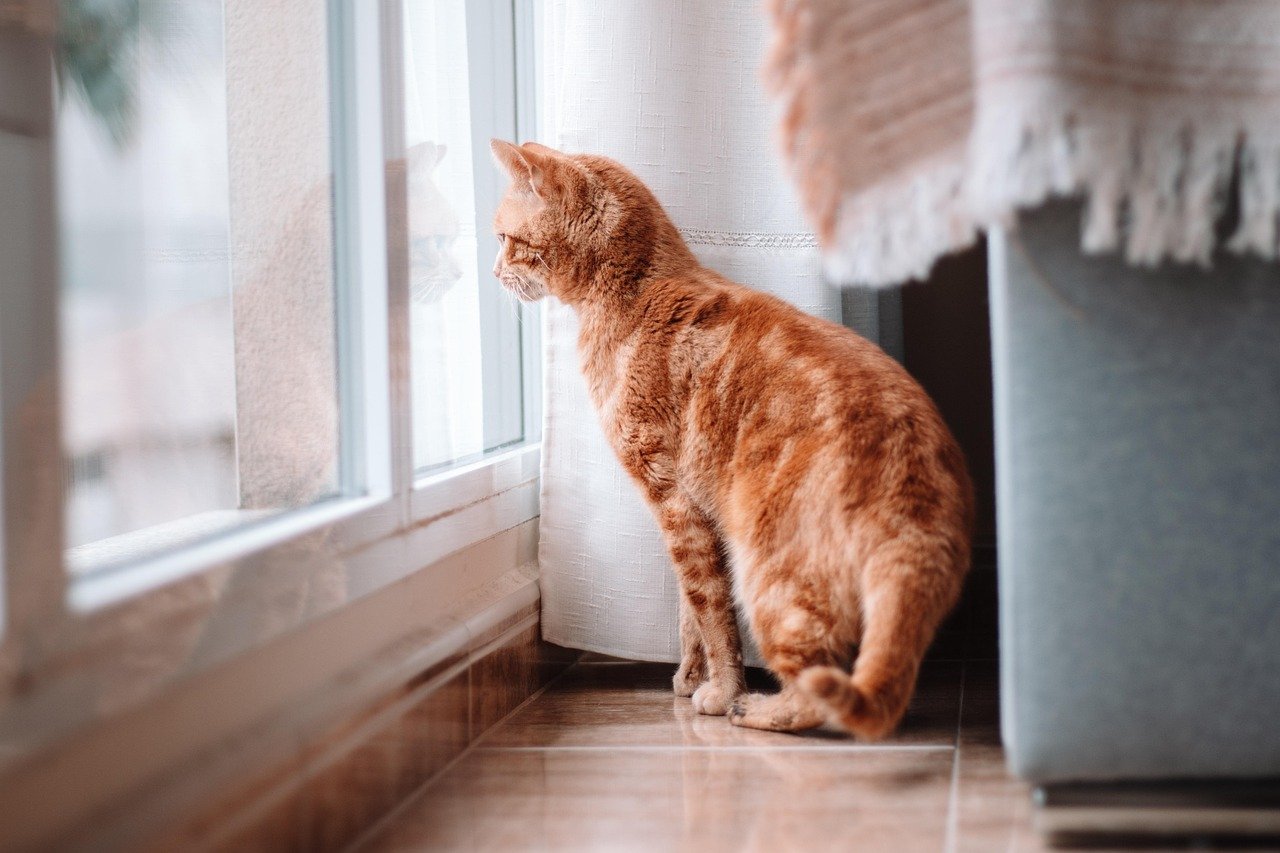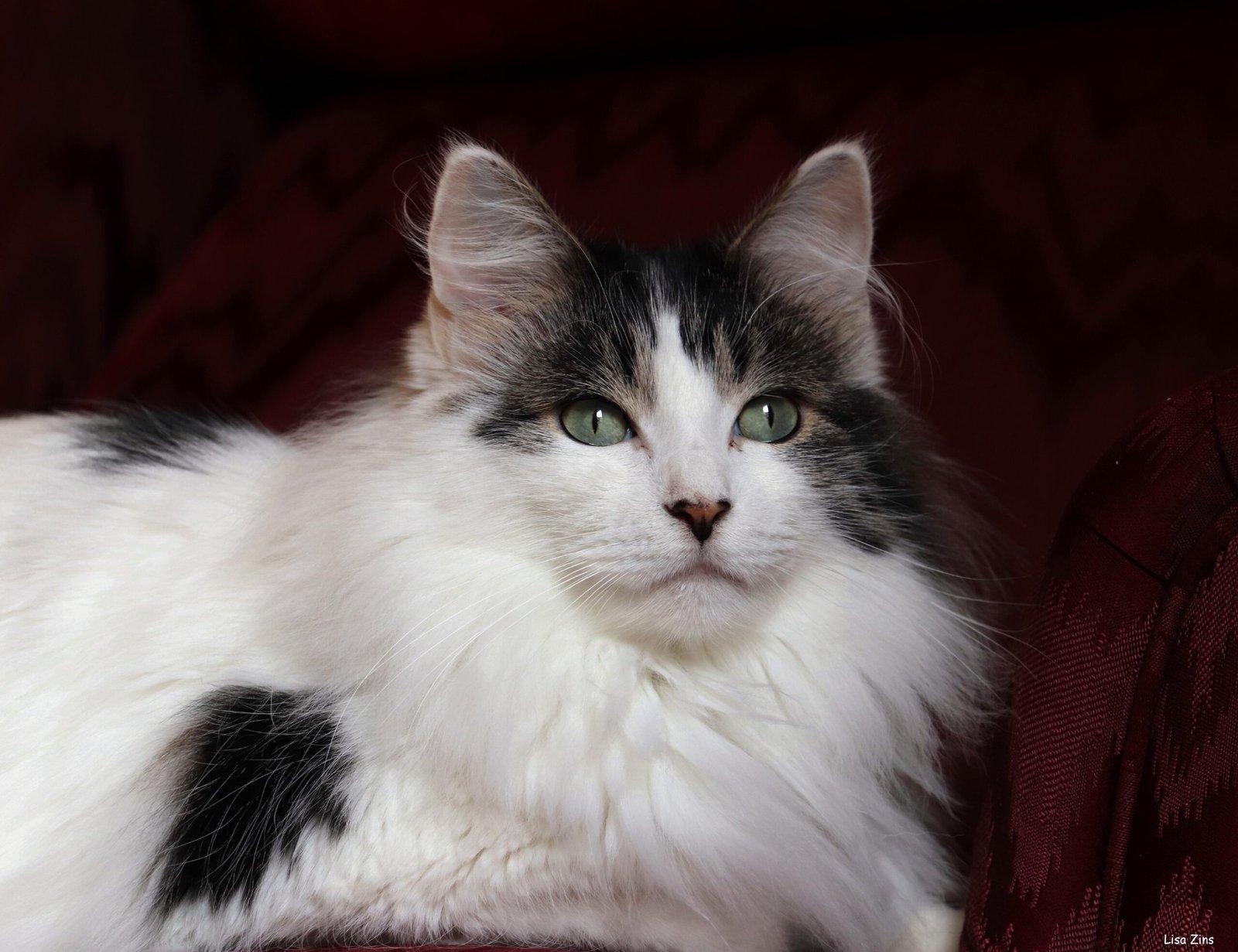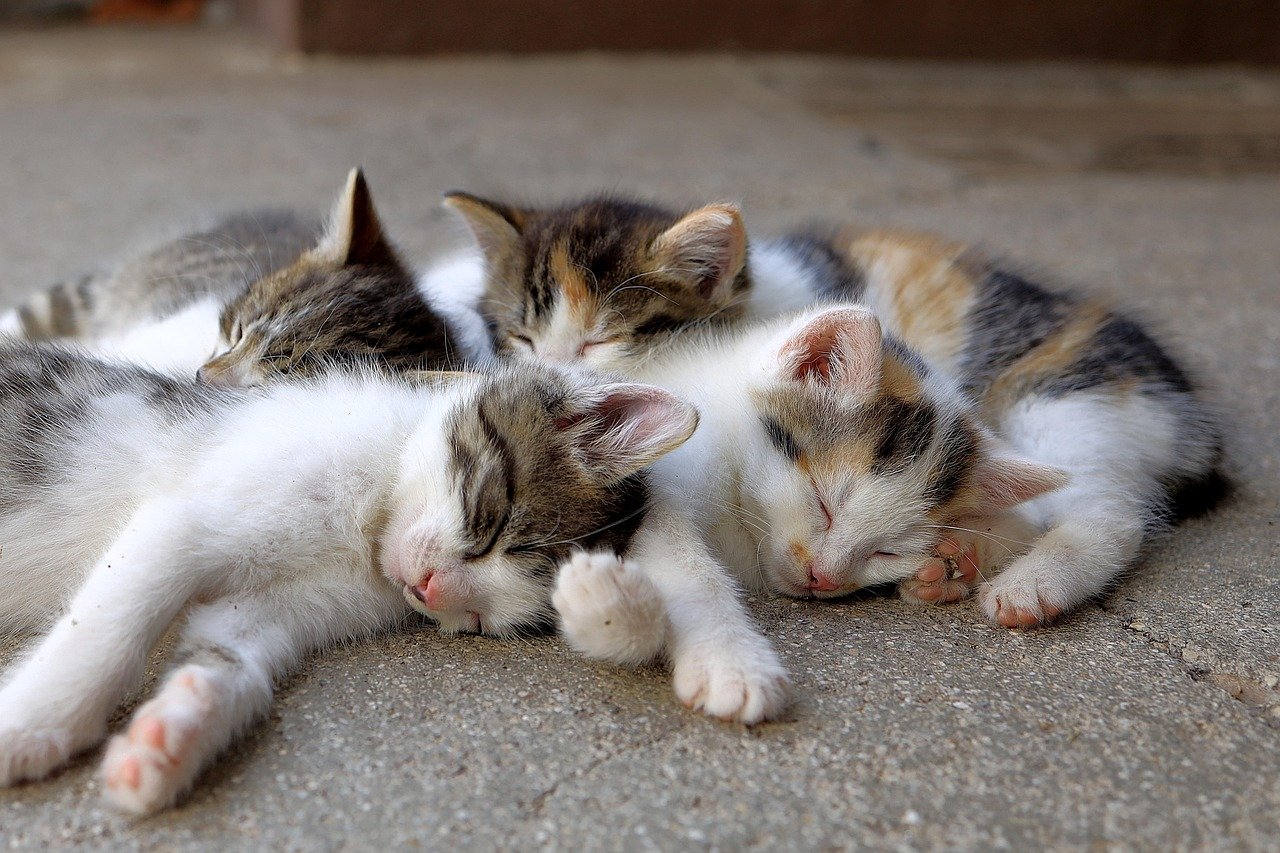Imagine the world through your cat’s eyes—every sound, every scent, every movement in your home is part of a delicate balance. For cats who crave routine and predictability, even small changes can feel seismic. If you’ve ever noticed your feline friend acting skittish after a simple furniture rearrangement or meowing anxiously when you come home late, you already know just how much your cat depends on stability. The good news? You have the power to create a peaceful, secure environment where your cat can truly thrive. Let’s dive into the practical, heartfelt ways you can keep your cat’s world wonderfully consistent.
Understanding Why Consistency Matters

Cats are creatures of habit, and their well-being often hinges on a predictable routine. Unlike dogs, who may adapt more easily to change, cats feel safest when they know what to expect. Consistency in their environment helps reduce anxiety and stress, making them feel more secure. When routines are disrupted, some cats may react with hiding, aggression, or even health problems like refusing food. A steady routine is especially important for cats who have experienced trauma or have a naturally anxious temperament. By keeping things reliable, you’re not just making life easier for your pet—you’re showing them love in a language they truly understand. Stability is the foundation for your cat’s trust, happiness, and even their physical health.
Setting Regular Feeding Times

One of the easiest ways to create stability is with scheduled feeding. Cats rely heavily on meal routines, and inconsistent feeding can quickly throw them off balance. Try to serve breakfast and dinner at the same times each day. If you’re busy or away, consider an automatic feeder to maintain this routine. Not only does this help regulate your cat’s digestion, but it also gives them a sense of predictability they crave. Watching for you at meal times becomes a comforting ritual. Over time, your cat will learn when to expect food, easing their mind and reducing stress-related behaviors. Mealtime predictability can also prevent overeating and help with portion control, which is vital for your cat’s health.
Maintaining a Stable Litter Box Environment

A clean, consistent litter box area is crucial for a cat’s comfort. Choose a quiet, accessible spot and avoid moving the box unless absolutely necessary. Cats are sensitive to smells and textures, so stick with the same litter type and avoid sudden changes. Scoop the box daily and perform a thorough cleaning on a regular schedule. If you must switch litter brands or box locations, do so gradually to avoid confusing your cat. A reliable litter area reassures your cat that their needs will always be met, minimizing accidents and stress. Remember, a cat who trusts their bathroom spot feels more at home in the entire house.
Creating Predictable Play Sessions

Interactive play is not just fun, it’s essential for your cat’s mental and physical health. Schedule daily play sessions around the same time each day, whether it’s just before dinner or in the evening. Cats love to anticipate these moments, and the regularity helps burn off energy and ease nerves. Use a variety of toys, but keep the playtime structure similar—maybe start with a wand toy, then finish with a puzzle treat. These playful routines can become a comforting anchor in your cat’s day. Consistent play also strengthens the bond between you and your feline, building trust and affection over time.
Protecting Quiet Time and Safe Spaces

Every cat needs a sanctuary—a quiet place to retreat when the world feels overwhelming. Identify spots your cat naturally gravitates to, like a sunny window or a cozy bed, and make them permanently available. Avoid rearranging these safe spaces or allowing them to become noisy or crowded. If guests visit or loud activities occur, ensure your cat can access their sanctuary undisturbed. This respect for your cat’s need for solitude is a powerful way to provide emotional security. Over time, your cat will learn they always have somewhere to feel calm and safe, no matter what else changes.
Minimizing Sudden Changes in the Home

Cats are famously resistant to change, so limit major adjustments whenever possible. If you must move furniture, introduce new pets, or start renovations, do so slowly and thoughtfully. Give your cat time to explore new arrangements at their own pace. Consider using familiar scents—like a well-loved blanket—to help them adjust. When big changes are unavoidable, keep as many other routines as possible intact. This helps reassure your cat that while some things may shift, the core of their world remains stable. Small gestures, like speaking softly or offering treats during transitions, can make all the difference.
Consistent Grooming and Health Care

Grooming isn’t just about looks—it’s a vital part of your cat’s health and routine. Regular brushing, nail trims, and dental care should occur on a predictable schedule. Choose a quiet area and stick to the same order of steps each time, so your cat knows what to expect. If your cat is nervous, gentle repetition can transform grooming from a dreaded chore into a bonding experience. Likewise, keep vet visits and medication administration as consistent as possible. Predictable care routines help your cat trust you and reduce fear, making each process smoother for both of you.
Sticking to Daily Cleaning Routines

Household cleaning can disrupt a cat’s sense of security, especially when strong smells or noisy vacuums are involved. Try to clean at the same times each week, and give your cat advance warning if you’ll be using loud equipment. Use pet-safe cleaning products that don’t overwhelm your cat’s sensitive nose. If certain chores require moving the cat’s things, put them back exactly where they were. By keeping cleaning routines predictable, you minimize the chance of startling your pet or making them feel their territory is at risk. A consistently clean environment also means fewer health risks for your furry friend.
Respecting Your Cat’s Social Preferences

Not all cats are social butterflies—some prefer quiet companionship, while others enjoy attention and play. Get to know your cat’s unique social cues and respect their boundaries. Try to interact with your cat at the same times each day, such as in the morning before work or in the evening when you relax. If your cat prefers alone time, make sure they can always access their private spots without interruption. Consistency in your interactions reassures your cat that their preferences are understood and honored. Over time, this builds trust and a deeper, more harmonious relationship.
Providing Consistent Sleeping Arrangements

Cats are notorious for napping in the same cozy spots day after day. If your cat has a favorite bed or blanket, avoid moving it unnecessarily. Wash bedding on a regular schedule, but try to use the same detergent and avoid introducing strong scents. If you need to move your cat’s bed, do so gradually, placing it in the new spot alongside familiar items. Consistent sleeping arrangements help your cat feel grounded and secure. A predictable sleep environment also supports healthy rest and can reduce nighttime wakefulness or anxiety.
Using Routine Sounds and Cues

Cats quickly learn to recognize the sounds of their home, from the jingle of keys to the hum of appliances. Use these familiar noises to your advantage by creating auditory cues for routines, such as shaking a treat bag before feeding or softly calling your cat at playtime. Avoid sudden loud noises or abrupt changes in sound patterns, as these can be unsettling. Over time, your cat will associate certain sounds with positive experiences, enhancing their sense of stability. Even your voice can become a comforting signal that all is well.
Maintaining Familiar Scents

Scent is a powerful anchor for cats, helping them identify safe territory and family members. Try to keep your home’s scent profile consistent by using the same air fresheners, detergents, and cleaning products. If you bring in new furniture or guests, introduce their scents gradually. Rubbing a cloth on your cat’s cheeks and then on new objects can help spread familiar pheromones. Avoid introducing strong or unfamiliar odors suddenly. A consistent scent environment reassures your cat that their world is safe and unchanged.
Offering Predictable Treat Times

Treats are more than just snacks—they’re a joyful part of your cat’s daily routine. Offer treats at the same time each day, such as after play or before bedtime. Use the same type of treat to avoid digestive upsets and keep the experience familiar. If you use treats for training or to reward calm behavior, stick to a consistent method and timing. Predictability in treat giving helps your cat feel rewarded and secure, reinforcing positive behaviors and deepening your bond.
Keeping a Consistent Temperature

Cats are very sensitive to temperature changes, and a sudden chill or heatwave can be distressing. Try to keep your home’s temperature within a comfortable range, especially in areas where your cat spends most of their time. If you use heaters or air conditioning, introduce them gradually so your cat can adjust. Provide extra blankets or cooling mats as needed, and avoid placing your cat’s bed near drafts or direct sunlight. Consistent temperature is another subtle way to help your cat feel comfortable and secure in their environment.
Following a Routine for Medication or Supplements

If your cat needs regular medication or supplements, timing is everything. Give medication at the same times each day, using the same process and location whenever possible. Use gentle, reassuring tones and offer a treat or favorite activity afterward. If you must change the medication schedule, do so gradually and with extra comfort. Consistency in medication routines helps reduce stress and increases the likelihood your cat will cooperate, keeping them healthier and happier.
Predictable Human Schedules

Cats often tune in to their owners’ routines, from morning alarms to evening TV time. Try to keep your own schedule steady, especially around key moments like waking up, leaving the house, or returning home. Greet your cat in the same way each day, creating a ritual of connection. If your work hours change, help your cat adjust by maintaining other routines as closely as possible. A predictable human presence is one of the strongest pillars of security for a stability-seeking cat.
Handling Visitors and New Faces Carefully

Visitors can be both exciting and stressful for cats who need stability. Whenever possible, introduce new people gradually and in a controlled manner. Ask guests to speak softly and avoid overwhelming your cat with attention. Provide your cat with an escape route and access to their safe spaces at all times. Keeping visitor routines predictable, such as always offering a treat after the doorbell rings, can help your cat feel more comfortable. Over time, these small gestures teach your cat that visitors are not a threat to their world.
Consistent Training and Rules

Training isn’t just for dogs—cats benefit from clear, consistent rules too. Decide on household boundaries, such as which furniture is off-limits, and enforce them gently but reliably. Use the same cues, words, and rewards each time. If multiple people care for your cat, make sure everyone is on the same page to avoid confusion. Consistency in training helps your cat understand expectations and builds confidence in their environment. A well-trained cat is not only happier but also more comfortable in their routine.
Managing Changes in Family Dynamics

Big changes like a new baby, roommate, or pet can send a sensitive cat into a tailspin. Prepare your cat by introducing new scents, sounds, and routines gradually. Set aside extra time for reassurance and play during transitions. Keep as many old routines intact as possible, such as feeding and play schedules. If your cat seems anxious, provide extra comfort with familiar toys or bedding. By managing changes thoughtfully, you help your cat adapt while maintaining a sense of stability.
Celebrating Routine with Love and Patience

At the heart of every stable cat-human relationship is patience and genuine affection. Celebrate your routines—whether it’s morning cuddles or evening play—as special moments of connection. Use gentle words and touches to reinforce your love. If you slip up or routines get disrupted, don’t be hard on yourself; simply return to normal as soon as possible. Your patience and consistency communicate safety and care, creating a home where your cat can truly relax and thrive. Each day, your steady presence becomes the greatest comfort your cat could ever ask for.
Hi, I’m Bola, a passionate writer and creative strategist with a knack for crafting compelling content that educates, inspires, and connects. Over the years, I’ve honed my skills across various writing fields, including content creation, copywriting, online course development, and video scriptwriting.
When I’m not at my desk, you’ll find me exploring new ideas, reading books, or brainstorming creative ways to solve challenges. I believe that words have the power to transform, and I’m here to help you leverage that power for success.
Thanks for stopping by, Keep coming to this website to checkout new articles form me. You’d always love it!






